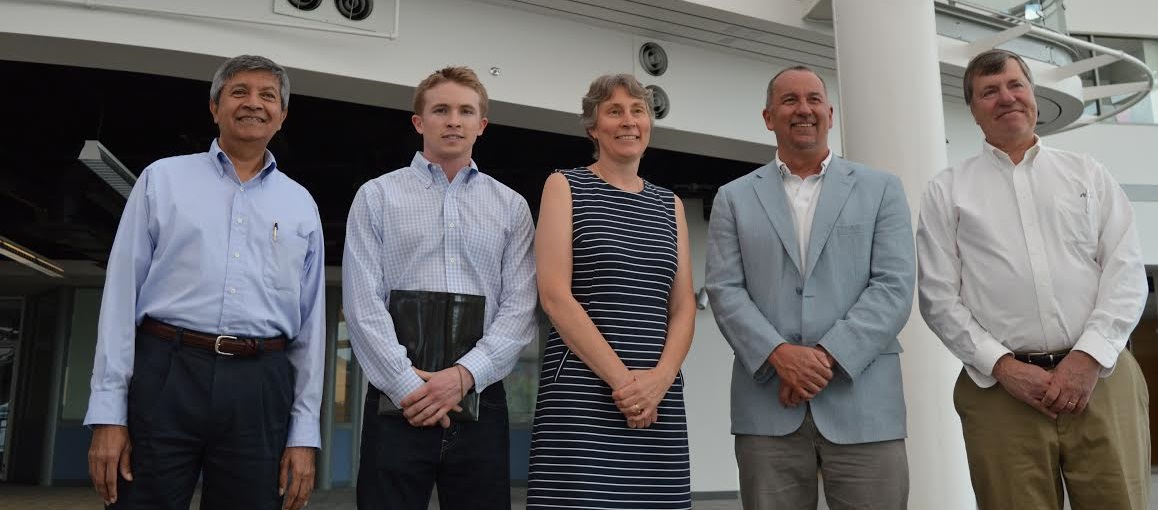Every year, millions of fish raised in aquaculture die of nervous necrosis virus (NNV). “The disease affects the brain, and the fish lose their vision and balance,” says Vikram Vakharia, professor of marine biotechnology at UMBC. As a result of damage to the nervous system, “the fish just swim in circles,” Vakharia says. His lab is housed at the Institute of Marine and Environmental Technology (IMET) on Baltimore’s Inner Harbor.
In 2013, the Maryland Innovation Initiative (MII) funded Vakharia to develop a vaccine that protects fish from NNV. He successfully developed an effective vaccine, but it had to be injected into each fish individually—a labor-intensive and costly process. Then BioHealth Innovation, a public-private economic development partnership in Maryland, approached Vakharia to develop a market study and business plan. BHI found that farms would prefer an oral vaccine, because it’s much easier to deliver a vaccine via food pellets. That’s what Vakharia tackled next.
He succeeded in the lab, and, along with BioHealth Innovation, formed a company called VakSea, Inc. to convert the lab success into a commercial product. Recently, VakSea licensed the technology from UMBC and will collaborate with Allotropic Tech, Inc. a bwtech@UMBC company that will produce the vaccine product. It will be mixed with food pellets in large quantities for an upcoming clinical trial as part of an MII phase III grant. This moves Vakharia one giant leap forward in tackling a major obstacle facing the $70 billion farmed-fish industry.
“It will be novel to deliver the vaccine orally. A lot of people will be interested,” says Vakharia. NNV is particularly prevalent in East Asia and countries that border the Mediterranean Sea such as Greece, Italy, and Turkey.
Vakharia is continuing to work on new ways to increase the vaccine’s efficacy, and VakSea submitted a Small Business Innovation Research (SBIR) grant to the National Science Foundation that would support that work.
Even with this major advance to combat NNV on the horizon, there are plenty of other diseases that wreak havoc on fish populations globally. “If this works,” Vakharia says, “it opens the door to use this technique with other pathogens.”
Image: At the VakSea license signing. From left to right: Vikram Vakharia (UMBC), Kurt Herzog (BHI), Wendy Martin (UMBC), Ken Malone (BHI), Bob Balcerzak (Allotropic). Photo by Nick Hammond (IMET).
Tags: CNMS, MarineBiotech, Research

